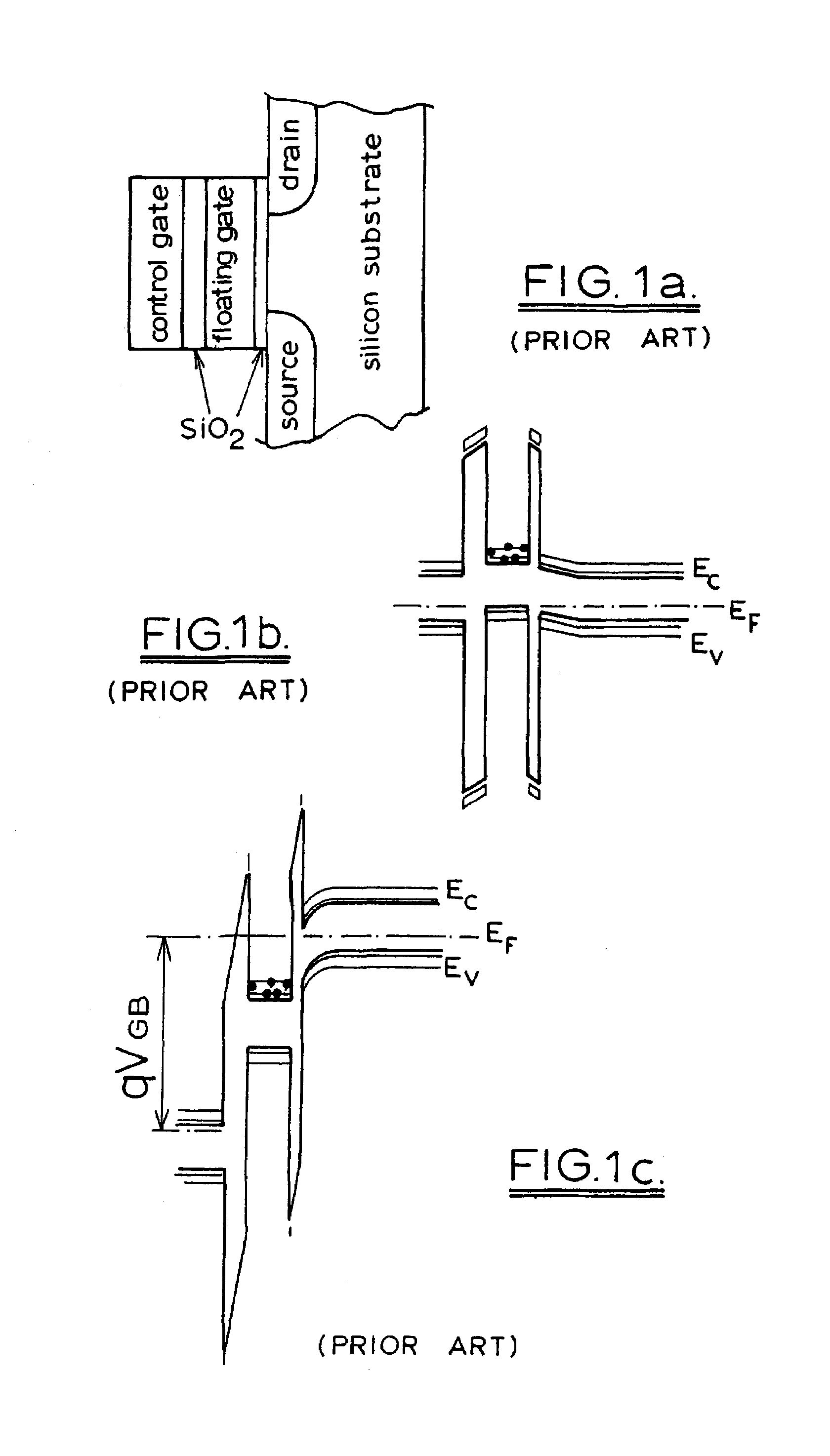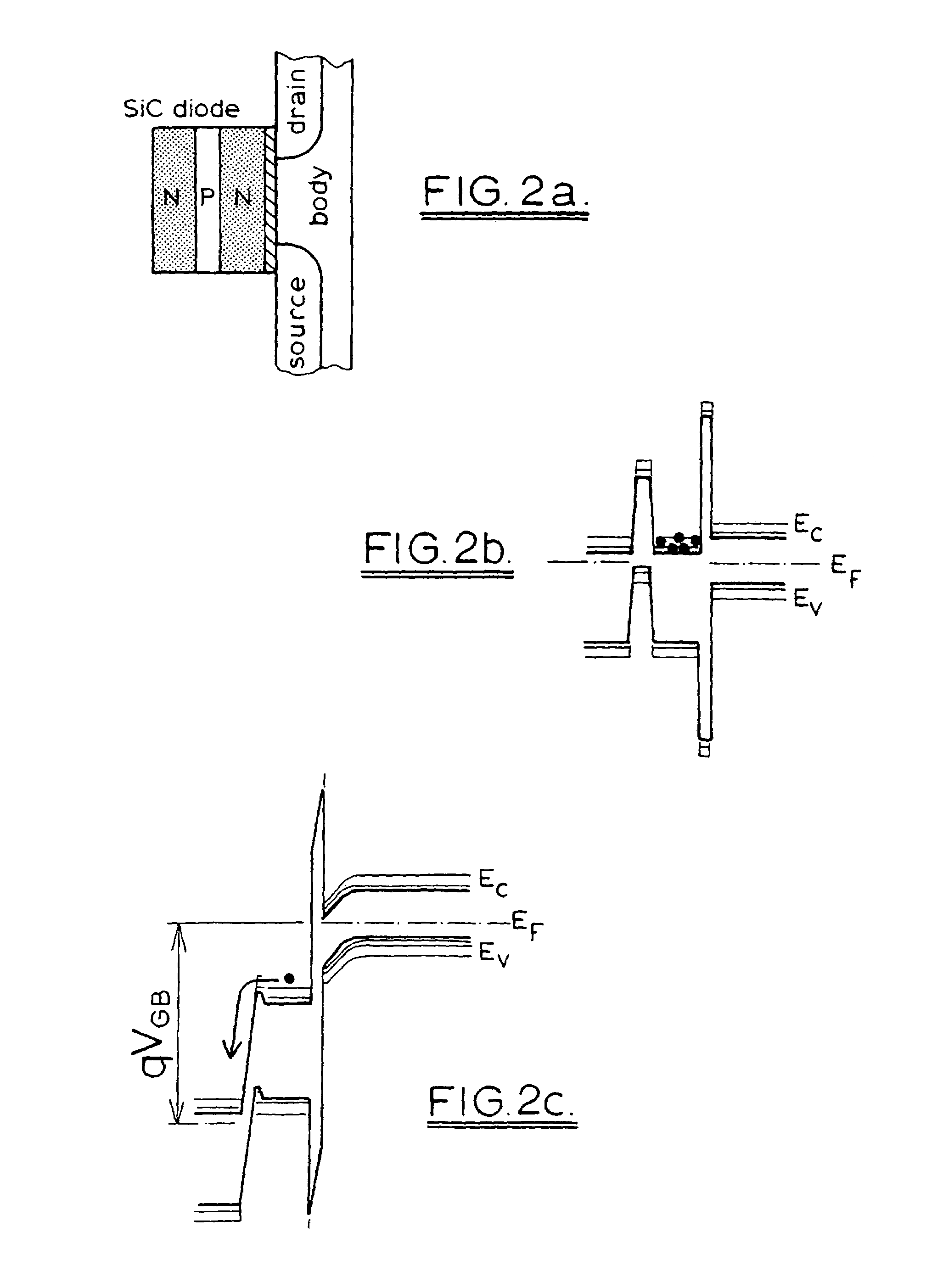Memory cell
a memory cell and memory technology, applied in the field of memory cells, can solve the problems of limiting the feature size down scaling, volatile dynamic random access memory devices in the present silicon based technology, and inability to use ram applications, so as to improve the speed of charging and discharging, and remove the problem of down scaling
- Summary
- Abstract
- Description
- Claims
- Application Information
AI Technical Summary
Benefits of technology
Problems solved by technology
Method used
Image
Examples
Embodiment Construction
[0049]Preferred embodiments of the invention will be described with reference to the drawings in which:
[0050]FIG. 1a-c shows relevant prior art: energy-band diagrams of 1T cell with capacitor-isolated floating gate used in flash memories;
[0051]FIG. 2a-c shows energy-band diagrams of 1T cell with diode isolation disclosed in this invention;
[0052]FIG. 3 is Arrhenius plot of charge-retention times measured at different temperatures with a MOS capacitor on 4H SiC;
[0053]FIG. 4 is Arrhenius plot of charge-retention times measured at different temperatures with a MOS capacitor on 3C SiC;
[0054]FIG. 5 is NOR memory array using the 1T cells with diode isolation, disclosed in this invention;
[0055]FIG. 6 is I-V characteristic of a reference diode, defining the forward (VF) and the reverse (VR) turn-on voltages;
[0056]FIG. 7 is cross-sectional view of 1T cells with diode isolation in the preferred implementation;
[0057]FIG. 8 is the layout of 1T cells used in a NOR-type array.
[0058]FIG. 9 is cross...
PUM
 Login to View More
Login to View More Abstract
Description
Claims
Application Information
 Login to View More
Login to View More - R&D
- Intellectual Property
- Life Sciences
- Materials
- Tech Scout
- Unparalleled Data Quality
- Higher Quality Content
- 60% Fewer Hallucinations
Browse by: Latest US Patents, China's latest patents, Technical Efficacy Thesaurus, Application Domain, Technology Topic, Popular Technical Reports.
© 2025 PatSnap. All rights reserved.Legal|Privacy policy|Modern Slavery Act Transparency Statement|Sitemap|About US| Contact US: help@patsnap.com



